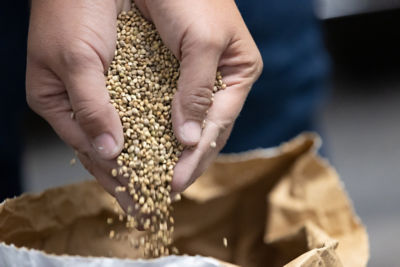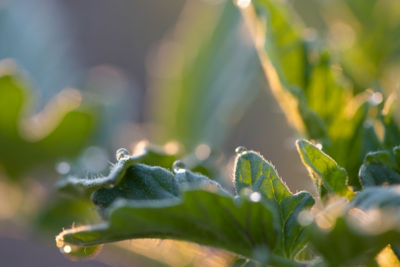Causal Agent
Distribution
Worldwide
Symptoms
Symptoms first appear on leaves as small, water-soaked lesions that quickly enlarge. Affected tissue turns brown and becomes soft and mushy with an accompanying foul odor. Eventually, leaves, stems and roots may decay entirely. This disease may be found in the field on cabbage, Chinese cabbage, rutabaga and turnips, but post-harvest soft rot during shipping or storage accounts for the majority of losses from this pathogen.
Pectobacterium spp. (synonym: Erwinia spp.), Pseudomonas marginalis pv. marginalis


Conditions for Development
Soft rot bacteria survive in soil and decaying plant material, and infect plants through wounds, stomata or hydathodes. Cultivation, harvesting, handling, freezing or insect injuries are often points of initial infection. The pathogen is generally spread by irrigation water, rain, several species of maggot flies and other insects. Disease development is usually favored by warm [25-30°C (77-86°F)], humid conditions or following periods of wet weather that lead to free moisture on plant tissues. Erwinia spp. and Pseudomonas spp. may also act as secondary pathogens, following other diseases such as black rot or black leg.
Control
To minimize soft rot losses, control insects, try to avoid mechanical injury during harvest, packing and shipping, and do not pack produce when wet. Additionally, store and ship produce at temperatures near 4°C (39°F).
Causal Agent
Pectobacterium spp. (synonym: Erwinia spp.), Pseudomonas marginalis pv. marginalis
Distribution
Worldwide
Symptoms
Symptoms first appear on leaves as small, water-soaked lesions that quickly enlarge. Affected tissue turns brown and becomes soft and mushy with an accompanying foul odor. Eventually, leaves, stems and roots may decay entirely. This disease may be found in the field on cabbage, Chinese cabbage, rutabaga and turnips, but post-harvest soft rot during shipping or storage accounts for the majority of losses from this pathogen.
Pectobacterium spp. (synonym: Erwinia spp.), Pseudomonas marginalis pv. marginalis


Conditions for Development
Soft rot bacteria survive in soil and decaying plant material, and infect plants through wounds, stomata or hydathodes. Cultivation, harvesting, handling, freezing or insect injuries are often points of initial infection. The pathogen is generally spread by irrigation water, rain, several species of maggot flies and other insects. Disease development is usually favored by warm [25-30°C (77-86°F)], humid conditions or following periods of wet weather that lead to free moisture on plant tissues. Erwinia spp. and Pseudomonas spp. may also act as secondary pathogens, following other diseases such as black rot or black leg.
Control
To minimize soft rot losses, control insects, try to avoid mechanical injury during harvest, packing and shipping, and do not pack produce when wet. Additionally, store and ship produce at temperatures near 4°C (39°F).




